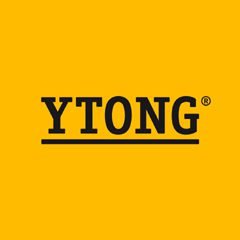YTONG also known Autoclaved Aerated Concrete (AAC), or Autoclaved Cellular Concrete (ACC) or Autoclaved Lightweight Concrete (ALC) was invented in the mid-1920 by the Swedish architect Johan Axel Eriksson. It is a lightweight, precast building material also known as: Porous concrete, Hebel (Aus), Aircrete and Thermalite (UK), BCA (Romania).
YTONG is an amazing construction material which simultaneously provides structure, insulation, and fire and mold resistance.

https://www.houzz.com/pro/ytongbh
Any homeowner can easy build wall in YTONG. You can choose from a full range of aerated concrete products under high-profile YTONG brand.
Aerated concrete from YTONG offers the best possible solution for any application in terms of technology, economy and ecology.
This modular building shell system comprises small and large aerated concrete elements which are perfectly coordinated from the cellar to the roof and are easy to use. it is very water resistant ( lot more than plasterboard ) and to different to plasterboard is not vibrating ( if you hit plasterboard wall with tiles on tiles can simple fall of but YTONG wall is much more resistant) . You can build parts of the floor in the shower in YTONG.
Those who build using YTONG aerated concrete rely on a great deal of quality and reliable building properties. Above all, however, it is quick and efficient to build. In practice, this a decisive argument for contractors to use aerated concrete, as this property results in a high construction speed.
YTONG Masonry | Eco Friendly House, a Trend and a Necessity (howtobuildahouseblog.com)
Steps to take:
1. Get YTONG blocks, they are usually cheap. You need some cement for stones, hand saw, and drills if you need some holes for something. Good idea is to use a tile trowel to apply adhesive.
2. In addition to its versatility, the YTONG block is characterized by its ease of working and construction. The blocks can be sawn as if they were wood. The construction advantages of the YTONG block are that it is light-weight, simple to lay, quick to assemble, simple to saw and file, (pipe) chases can easily be created and it has unlimited finishing possibilities.
To start you need two pieces of wood or metal on any side of the wall and string line between them. Make one strait line on the floor.
3. Apply cement adhesive on the floor to the line and on the stone you are going to put on the place.
You should know that, in addition to the standard (rectangular) block, there is a range of shaped blocks. With their introduction, YTONG capitalizes on the trend of making more of a wall. YTONG curved blocks enjoy the freedom to give internal and external walls added aesthetic value.
4. Continue with stones, if you need to cat some stone use hand saw for it. The material and product properties make this block suitable for both new-build projects and for renovation works. The light weight and the ease of construction especially play an important role in the field of renovation.
5. Add cement on any side of the wall to get good connection of your wall to surrounding walls.
Why to Choose YTONG?
1. YTONG blocks are not heavier than 18 Kilos. This means that the block is, primarily, a labor-friendly product.
2. YTONG’s exceptional fire resistance comes from its reaction to flames. The physical properties of YTONG materials make it the ideal formula for protection against fire as it is non-flammable.
3. YTONG is ecological and durable. High insulating power combined with the absence of thermal bridges means that YTONG slabs make a serious contribution to savings in energy consumption. Also, energy consumption during the manufacturing process is very low (hardening by autoclaving);
4. Due to its excellent insulation capacity and high thermal inertia, YTONG protects you against the cold in winter. Conversely, in summer YTONG prevents the entry of heat. In other words: warm in winter and cool in summer.
5. The surface of an YTONG wall absorbs noise into its numerous partly open cells.
6. YTONG is an autoclaved cellular concrete comprising of sand, water and air. Air filled cells form during the manufacturing process. This air, in fact, constitutes the best imaginable thermal insulation in this manufacturing context. As a result, YTONG obtains the characteristics of an insulating material.


